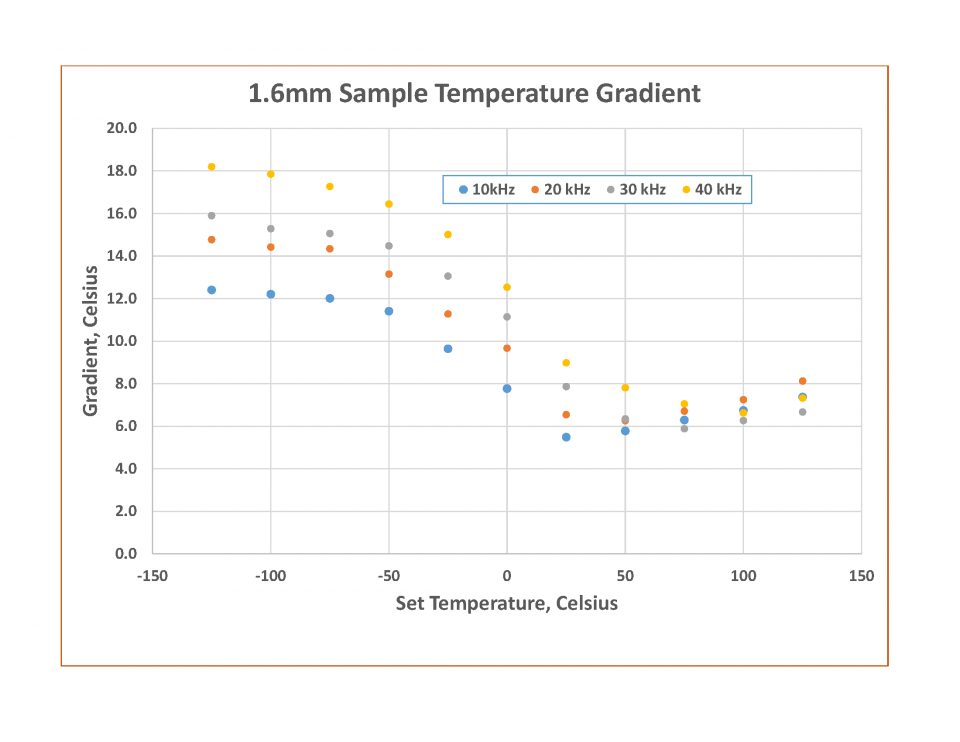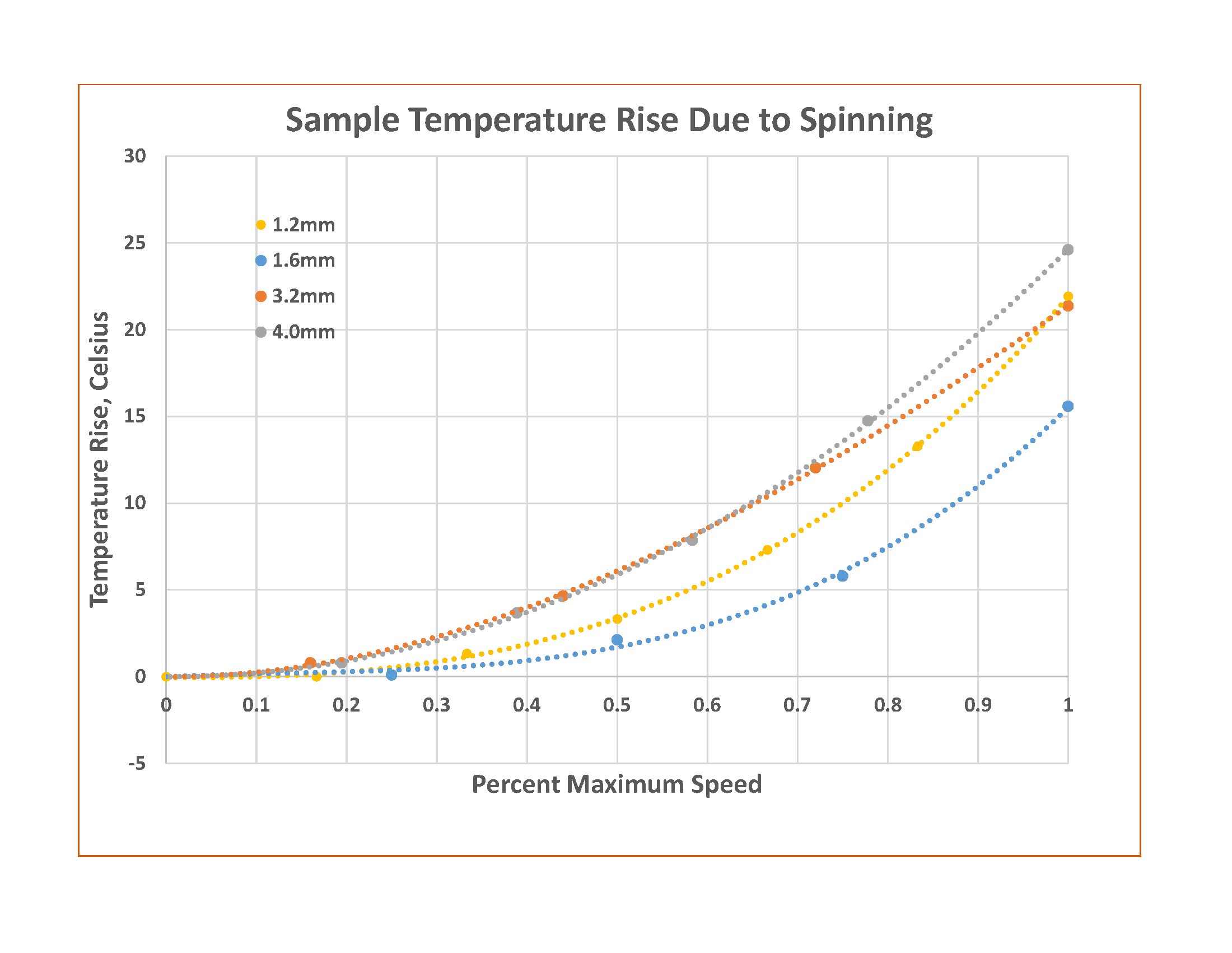VARIABLE TEMPERATURE DATA
VT DATA FROM PHOENIXNMR PROBE AND MODULES UTILIZING 207PB NMR SIGNAL
These data were all acquired at 14.1 T, using a single PhoenixNMR HXY probe body and merely exchanging different probe heads, using the 207Pb NMR signal from lead nitrate. See Experimental Details, below.
The HXY Premium Probe is typically quoted with a VT range of -125°C to +125°C. The standard VT range for the HX Probe is -75°C to +100°C. However, module identity and probe materials can affect the final specified VT range for a given probe.
Request a quote to obtain more detailed VT information for a specific probe configuration.
Click on any graph to view a larger image in a new window.
1.2 MM SPINNING MODULE
1.6 MM SPINNING MODULE
3.2 MM SPINNING MODULE
4 MM SPINNING MODULE
TEMPERATURE VS. SPINNING SPEED FOR VARIOUS MODULES
Temperature increases in a sample due to frictional heating from spinning. This data compares the amount of heating for different rotor sizes spinning at 25oC. Note the speeds are normalized to show zero to maximum spinning speed for each of the rotor sizes.VT flow rate is optimized for each rotor size (15 lpm for 1.2 mm, 25 lpm for 1.6 mm, 30 lpm for 3.2 mm, and 35 lpm for 4 mm rotor).
STATIC MODULE
EXPERIMENTAL DETAILS AND DATA ANALYSIS:
- 207Pb MAS NMR signals were converted to temperature measurements using the method detailed in A. Bielecki and D.P. Burum, JMR A 116, 2015-2020 (1995), with the exception that, for these data, the lead nitrate sample filled the entire specified sample volume of a given coil for all measurements.
- Warning: if you try this at home, do not spin a full rotor of PbNO3 at the maximum spinning speed for the module due to the high density of the sample.
- 207Pb static NMR signals were converted to temperature measurements using the method detailed in P. A. Beckman and C. Dybowski, JMR 146, 379-380 (2000). The lead nitrate sample filled the entire specified sample volume of the 5mm static coil.
- For a given set of experimental conditions, the sample temperature data and temperature gradient data were acquired from the same NMR spectrum.
- Initial temperature calibration for a given module was performed by recording a 207Pb spectrum at set point = 25oC at the minimum spinning speed reported for a given module (or static for the static module), and assigning the chemical shift of the PbNO3 resonance to 25oC under those conditions. All other temperature data for a given module are referenced to this starting condition.
- “Temperature gradient” is calculated from the width at baseline noise of the full 207Pb lineshape acquired for a given temperature/MASS.
- “Sample temperature” is calculated from the position of the weighted center of the full 207Pb lineshape.
- “Set temperature” is the temperature monitored at the dewar outlet where VT gasses enter the module.
- VT flow rates for each module are the flow rates recommended by PhoenixNMR for optimal VT performance while also spinning at high speed.
- Contact Us for more information about performing VT using a PhoenixNMR probe.










